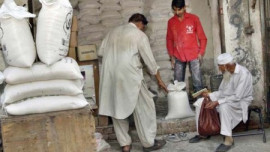
According to the European Commission, by 2017 an estimated 3.4 billion people around the world will own a smartphone and half of them will be using mHealth apps. Currently, nearly 100,000 such apps are available, with the top 20 free sports, fitness and health apps accounting for more than 230 million downloads worldwide.
“From a cost-effective perspective on providing care, the vision of m-Health is one of greater efficiencies. [It has the power] to improve patient outcomes,” says Dr Thomas Brennan, a prominent researcher in the field. By accessing information in a timely manner, patients can better cope with their condition and diseases. They have greater control over their own health and well-being, he explains. Correspondingly, with the help of mHealth, health practitioners can access multiple sources of health data, including detailed information about the subject’s physical activity, location and travel destinations, in order to make early diagnosis and prescribe medication.

“Mobile technologies are being used to encourage preventative behaviours, create patient pathways to care and enhance the quality of services. Many of these tools are open source and freely available,” states a research paper published in the October 2014 issue of European Journal of Cancer Care which explains the use of mHealth to support cancer care. The report reveals a wide array of mHealth functions which include storing patient records, delivering notifications via text messages or voicemail for missed or upcoming appointments and reminding patients when and which drug to take (particularly beneficial for tuberculosis patients who are highly vulnerable to drug-resistant tuberculosis). Such methods of notifying patients are also less time-consuming, cost-effective and relatively stress-free. Improved data collection can even enable long-term planning, which includes regulating the supply of drugs and other medical equipment. According to the report, for mHealth to be effective in cancer care, well-funded and concerted efforts by engineers, designers, clinicians and public health managers and researchers will be required.
By relegating part of the care to mobile devices, including health service delivery, mHealth has unburdened healthcare systems. In developing countries such as Pakistan where an abysmal $9.3 is spent per person on healthcare annually — as opposed to the World Health Organization recommended $60 per person — many rural patients are unable to access even basic medical services. By establishing a link between rural patients and medical professionals, mHealth can, therefore, bring healthcare within the reach of millions.

Despite the many benefits of mHealth, certain concerns have surfaced regarding the issue of privacy, confidentiality and protection of data gathered by health apps. Cost is another barrier to the adoption of mHealth. Like every new technology, it is also trying to attract new sources of revenue by introducing paid apps and services which a large number of patients are unwilling to purchase.
Despite the drawbacks, mHealth shows great potential of addressing rising global challenges. According to the 2014 research report compiled by PricewaterhouseCoopers, in the near future mHealth will be so well-integrated into the traditional healthcare system that using it will eventually become second-nature for patients and medical fraternity.
The potential impact of mHealth
• In Pakistan, 75,000 mothers and children can be saved annually with the help of maternal information services provided via text messages.
• In Russia, SMS treatment compliance could help cure 50,000 tuberculosis cases.
• In Hungary, treating patients remotely could annually save 40,000 patients from spending the night at a hospital.
• In Sweden, remote monitoring for elderly (so they can stay at home) could save $3 billion each year.
SOURCE: SOCIO-ECONOMIC IMPACTS OF MHEALTH 2013 REPORT BY TELENOR
Zohaib Amjad is a scientist with a major in Biology.
Published in The Express Tribune, Sunday Magazine, November 23rd, 2014.























COMMENTS
Comments are moderated and generally will be posted if they are on-topic and not abusive.
For more information, please see our Comments FAQ